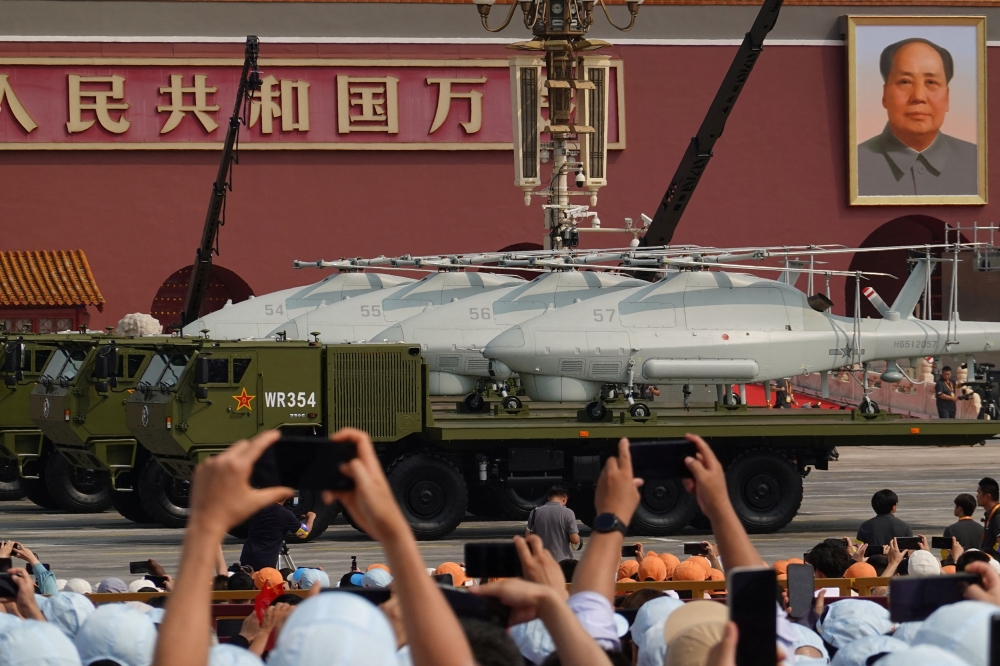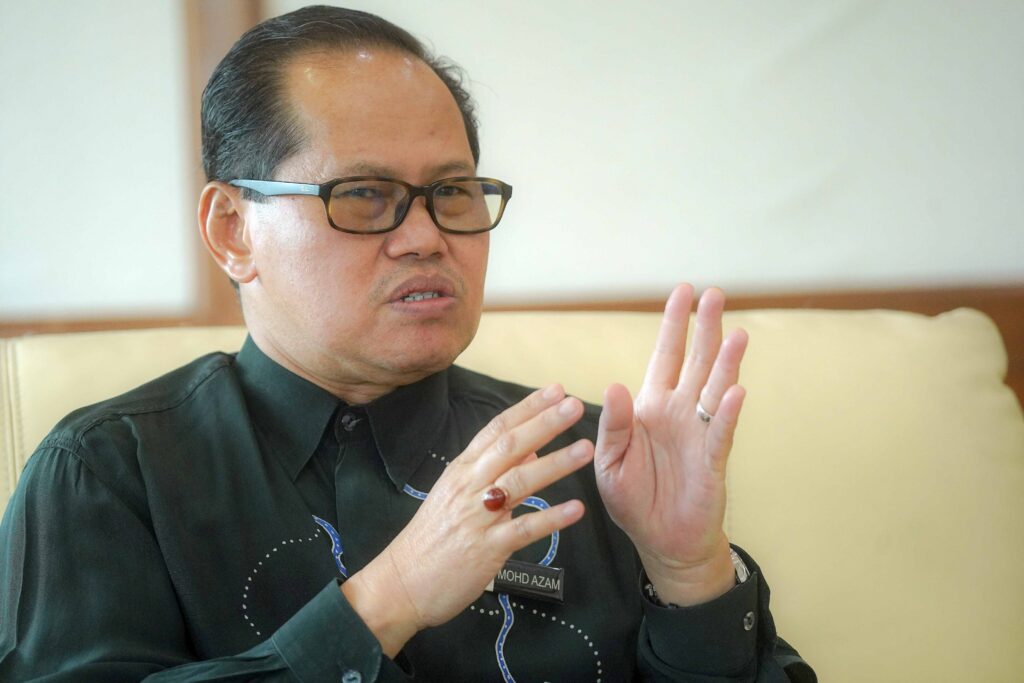SEPTEMBER 6 — China’s recent military parade in Beijing, where hypersonic missiles, underwater drones, laser weapons, and artificial intelligence – enhanced systems were rolled out before a global audience, was not merely a spectacle of pageantry.
It was a carefully choreographed statement of technological advancement, military preparedness, and national resolve. Inevitably, the same question echoed across Washington, Tokyo, New Delhi, and Canberra: should the world be worried?
The instinctive reaction has been to read parades as preparation for war. China parades hardware; therefore, it seeks conflict.
This is a dangerous oversimplification. Parades project capabilities, not intentions. Capabilities are observable; intentions are speculative. The danger lies in mistaking one for the other, and thus sliding into a self-fulfilling cycle of confrontation.
Capabilities versus intent
China has poured billions into indigenous defence innovation, producing systems that rival or outpace those of other major powers.
Hypersonic glide vehicles, unmanned maritime platforms, and space-based sensors are not theatre props. They are designed to reduce strategic vulnerability in contested zones such as the Taiwan Strait and the South China Sea.
But intent cannot be read off a missile tube. Beijing’s repeated emphasis on sovereignty, “national rejuvenation,” and the prevention of encirclement can be viewed as defensive or expansionist depending on vantage point.
The security dilemma arises when projection is misread as aggression: China arms to secure itself; others see threat and rearm; China then reads encirclement. The cycle feeds itself.
Pageantry as politics
Military parades are not unique to China. Washington uses flyovers and carrier deployments to project resolve. Russia’s Red Square parades and India’s Republic Day celebrations follow the same logic. These rituals reassure domestic audiences and send signals abroad.
What makes Beijing’s 2025 parade stand out is its timing. It came amid closer coordination with Russia and North Korea, and against a backdrop of intensifying Sino-American rivalry. But to assume the choreography of armoured columns equals the choreography of war is to conflate theatre with strategy.
History’s lessons in misreading
History reminds us how costly misinterpretations can be. Soviet parades in the 1960s often displayed prototypes that never entered service, yet Washington, fearing a “missile gap,” triggered costly procurement races. Japanese naval parades before World War II hardened US suspicion and narrowed diplomatic space.
Today’s risks are magnified by social media. Images of Chinese hypersonics go viral, stripped of context, then reframed as imminent threats. Policymakers, pressured by domestic audiences, act on perception rather than measured assessment. The action-reaction spiral accelerates.
Asean’s middle ground
For Asean, the parade is not an abstraction. South-east Asia sits at the crossroads where US strategy and Chinese assertion collide. Asean must ensure that what is displayed on parade grounds does not spill into its seas.
The South China Sea Code of Conduct, though fragile, remains indispensable. But Asean must go further: reminding great powers that Asia’s security cannot be reduced to counters and balances. It must be built through cooperative norms, maritime confidence-building measures, and inclusive multilateralism. Armies deter, but diplomacy sustains.
The Kuala Lumpur summit: A turning point
This is precisely why the October 2025 Asean and East Asia Summits in Kuala Lumpur matter. Under Malaysia’s chairmanship, Prime Minister Datuk Seri Anwar Ibrahim is positioned at a rare confluence of timing and necessity.
For the first time, leaders from the United States, China, Russia, Japan, India, Australia, and Brics counterparts will sit together under Asean’s convening umbrella in Kuala Lumpur.
The Beijing parade, followed by the expected US carrier deployment in the Pacific, risks locking both capitals into a tit-for-tat cycle. Kuala Lumpur offers the one venue where both powers — and their partners — can shift from projection to dialogue.
Anwar has already signalled Malaysia’s intent to act as convenor rather than bystander, hosting not just Asean and EAS meetings but also outreach summits with the GCC and BRICS.
By anchoring the October summits around the theme of “managing power transitions without war,” Kuala Lumpur could reset the narrative: parades may showcase strength, but dialogue showcases responsibility.
Anwar’s advantage
Anwar Ibrahim enjoys a credibility few regional leaders possess. Unlike leaders aligned too closely with Washington or Beijing, he is perceived as balanced and dialogical.
He has also cultivated ties with both Brics leaders such as Xi Jinping and Vladimir Putin, as well as with US President Donald Trump, who will attend the Kuala Lumpur summit despite political turbulence at home.
Malaysia, never having had a coup in its 68 years, presents itself as a stable democratic convener. Its record in humanitarian mediation — from Gaza to the Thai-Cambodian ceasefire — adds weight to its credibility.
If anyone can cool the action-reaction dynamic between Beijing and Washington, it is Asean under Anwar’s chairmanship in October 2025.
Calibrated statecraft, not alarmism
The lesson is simple: the world cannot afford to read intent from parades alone. Capabilities are real, but intentions must be discerned through sustained engagement, crisis behaviour, and multilateral diplomacy. To assume hostility without evidence manufactures the very hostility feared.
A dual-track approach is required: reassurance at home through deterrence, and reassurance abroad through dialogue. The Kuala Lumpur summit must institutionalise both.
Excessive militarisation of contested seas must be avoided. Maritime confidence-building measures must be expanded. And economic interdependence must not be derailed by suspicion.
Conclusion: Watching without marching
China’s parade was a message of strength, but not necessarily a threat of war. The United States will respond with its own displays. The action-reaction spiral is real, but it is not inevitable.
The October 2025 Kuala Lumpur Asean and East Asia Summits represent the rare moment where both Beijing and Washington will be seated at the same table, under the auspices of Asean’s quiet but steady diplomacy.
This is where Anwar Ibrahim can avert escalation — not by silencing parades, but by ensuring they do not march the region into conflict.
In Asia’s fragile balance, prudence remains the truest form of power. The world may watch the parades in Beijing and Washington. But in Kuala Lumpur this October, it must choose dialogue over alarmism.
* Phar Kim Beng, PhD, is the Professor of Asean Studies and Director of the Institute of International and Asean Studies (IINTAS) at the International Islamic University of Malaysia.
** This is the personal opinion of the writer or publication and does not necessarily represent the views of Malay Mail.







